If you buy through our links, we may earn an affiliate commission. This supports our mission to get more people active and outside.Learn about Outside Online's affiliate link policy
The Best Insulated Midlayers for Women (2026)
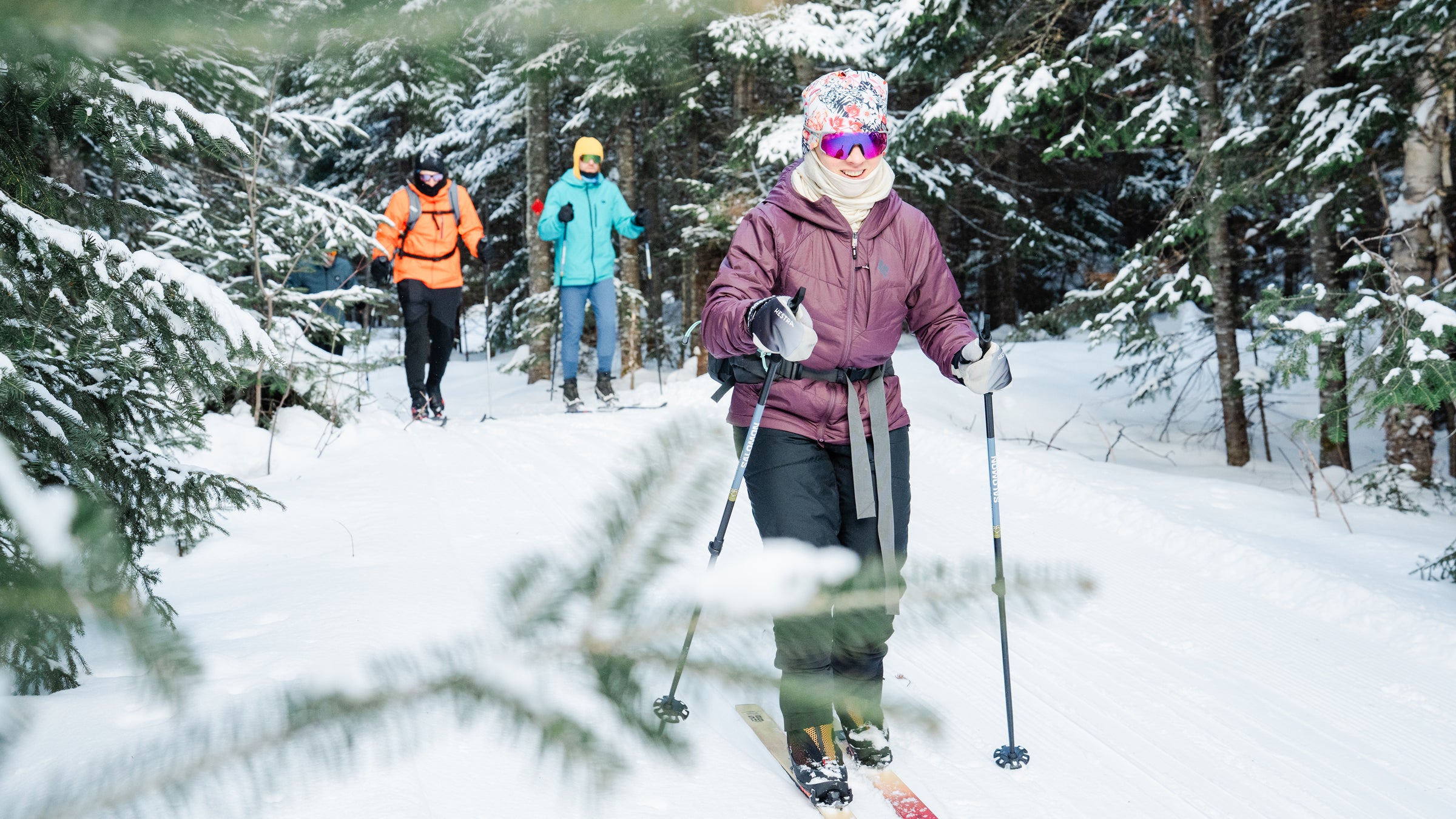
It's what's in the middle that counts the most when staying warm on the coldest winter days. (Photo: Evan Green)
Midlayers are required to fit an outrageously demanding job description. Unlike the super-puffy parkas and belay jackets that we wear to stay warm while hunkering down, midlayers provide insulation for activity–a role that calls for a true multi-tasker. Its duties include keeping us warm–but not so warm that we overheat during exertion–while also whisking away sweat and shielding us from the elements (should we decide to wear our midlayer as an outer layer, which these toppers must be versatile enough to handle when weather permits). It’s a tall order.
Yet our testing team found six of the best insulated midlayer jackets that check all the boxes. These breathable insulators successfully regulated testers’ temperatures while they skied, hiked, biked, and ran in winter weather conditions. Testers typically sandwiched these jackets over a base layer and beneath a waterproof shell. On climbs or in dry weather when they ditched the shell, testers evaluated these toppers for their ability to shed precipitation and buffer gusts. After testing close to 50 women’s insulated midlayers, we recommend these six standouts.
At a Glance
- Editor’s Choice: Flylow Mia Jacket ($280)
- Best Wool: Lé Bent Genepi Wool Insulated Hybrid Jacket ($240)
- Best Breathability: The North Face Summit Series Casaval Hybrid Hoodie ($260)
- Best Wind Protection: Black Diamond Solution 2.0 Hoody ($299)
- Best Stretch: Dynafit Tigard Alpha Direct Jacket ($240)
- Best for Cold Conditions: Marmot WarmCube Active Novus Hoody ($300)
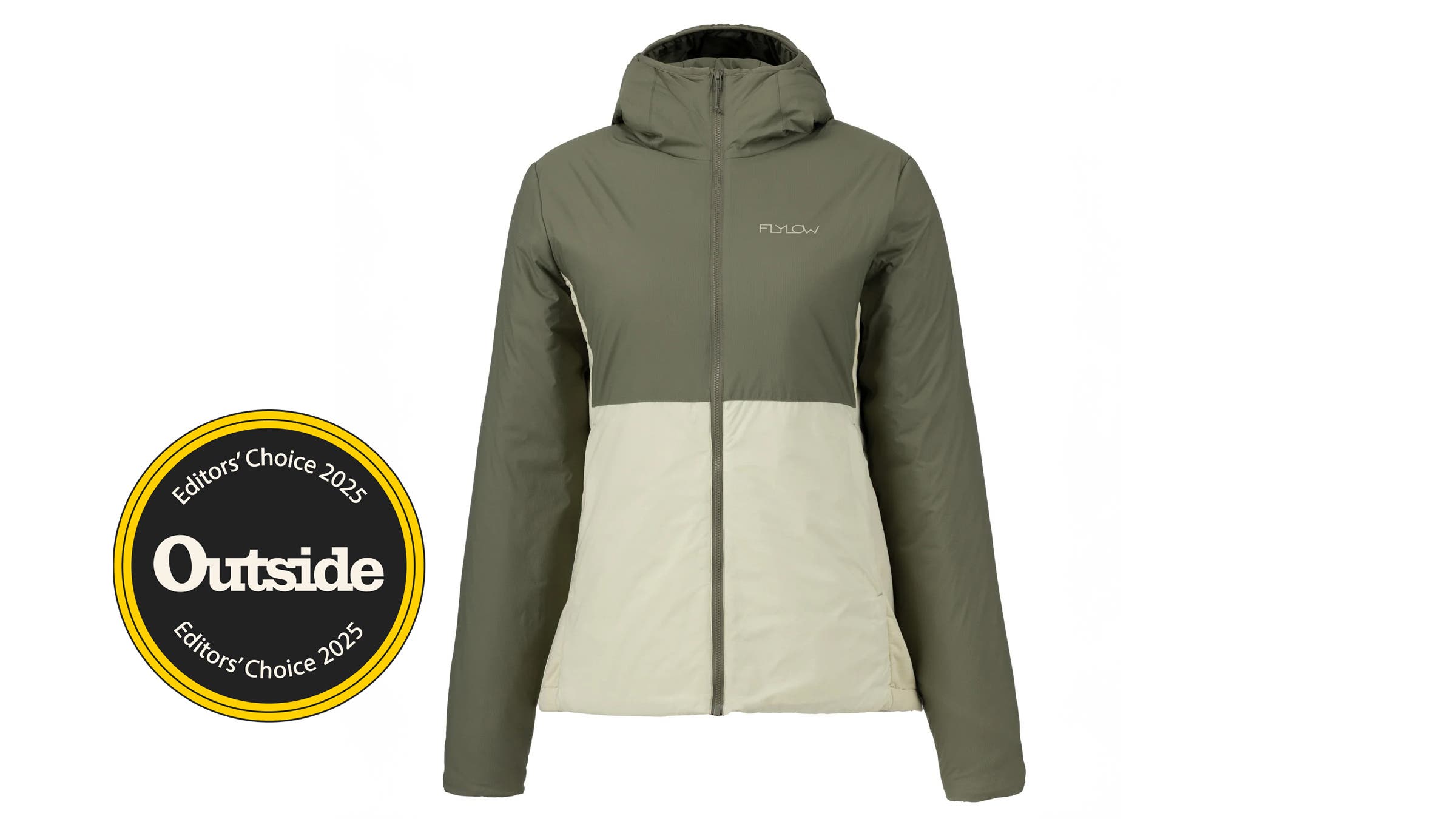
Editor’s Choice
Flylow Mia Jacket
Sizes: XS-XL
Weight: 12 oz.
Pros and Cons
+ Versatile
+ Layers well
+ Helmet-ready hood
– Fairly bulky
Two qualities put this midlayer above all other jackets we tested. First is its ability to keep wearers comfortable over an impressively wide range of temperatures. Whereas some insulators are specialists that excel at a particular temperature or exertion range, the Mia is a generalist that aces virtually every assignment, from sunny ski-tours in the mid-30s to blustery lift rides with 5-degree windchill. Second, it nails the ideal balance of breathability and weather protection. Neither too airy or impermeable, this jacket cut wind and dumped clamminess whether testers were hiking up Colorado’s Highlands Bowl, riding lifts at Steamboat, or fat-biking at Maine’s Bradbury Mountain.
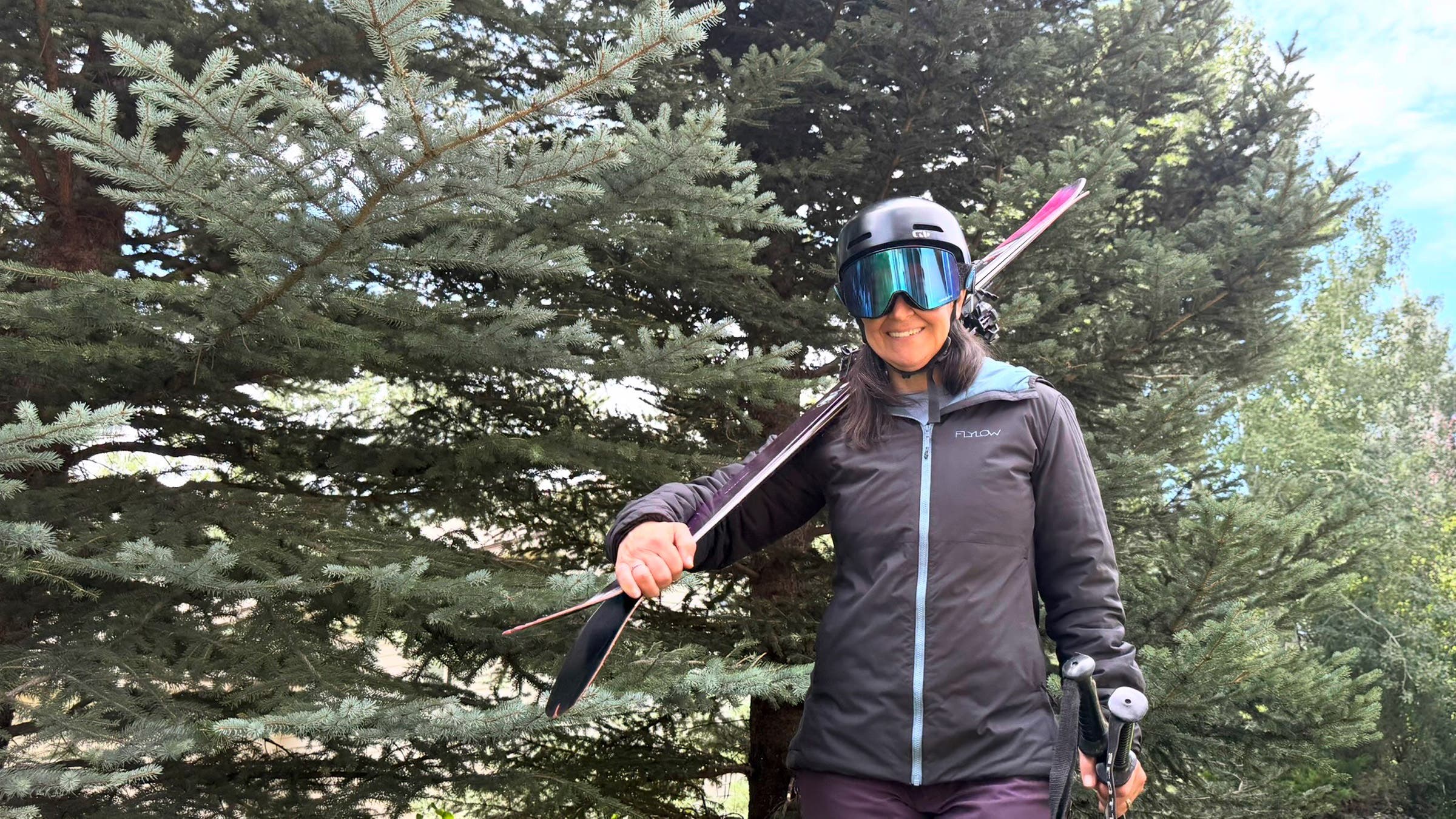
Its construction blends wind-resistant 20-denier Pertex Quantum Air shell fabric with 80 grams of Flylow’s proprietary recycled synthetic fill—except on the sides and underarms, which are made of gridded stretch-fleece fabric that’s less insulating and more ventilating. “Overall the jacket is breathable, but the extra-breathable side panels kept me from getting sweaty on hike-accessed ski runs and spring tours,” our Steamboat-based tester explains.
Its fit is trim, but still cut for skiing, so the Mia layers comfortably beneath a waterproof shell while offering full range of movement when worn alone in mild conditions. Five pockets (two zippered hand pockets, one internal zip pocket, and two open drop pouches) hold spare gloves and snacks. The PFAS-free DWR sheds snow flurries, and the generously-sized hood can be worn over a ski helmet. “It stays in place without a battle, even skiing fast in the wind, and the high collar protects my face from the cold,” our tester adds. For skiers, hikers, fat-bikers, and ice-skaters, the Mia might just be the do-it-all midlayer.
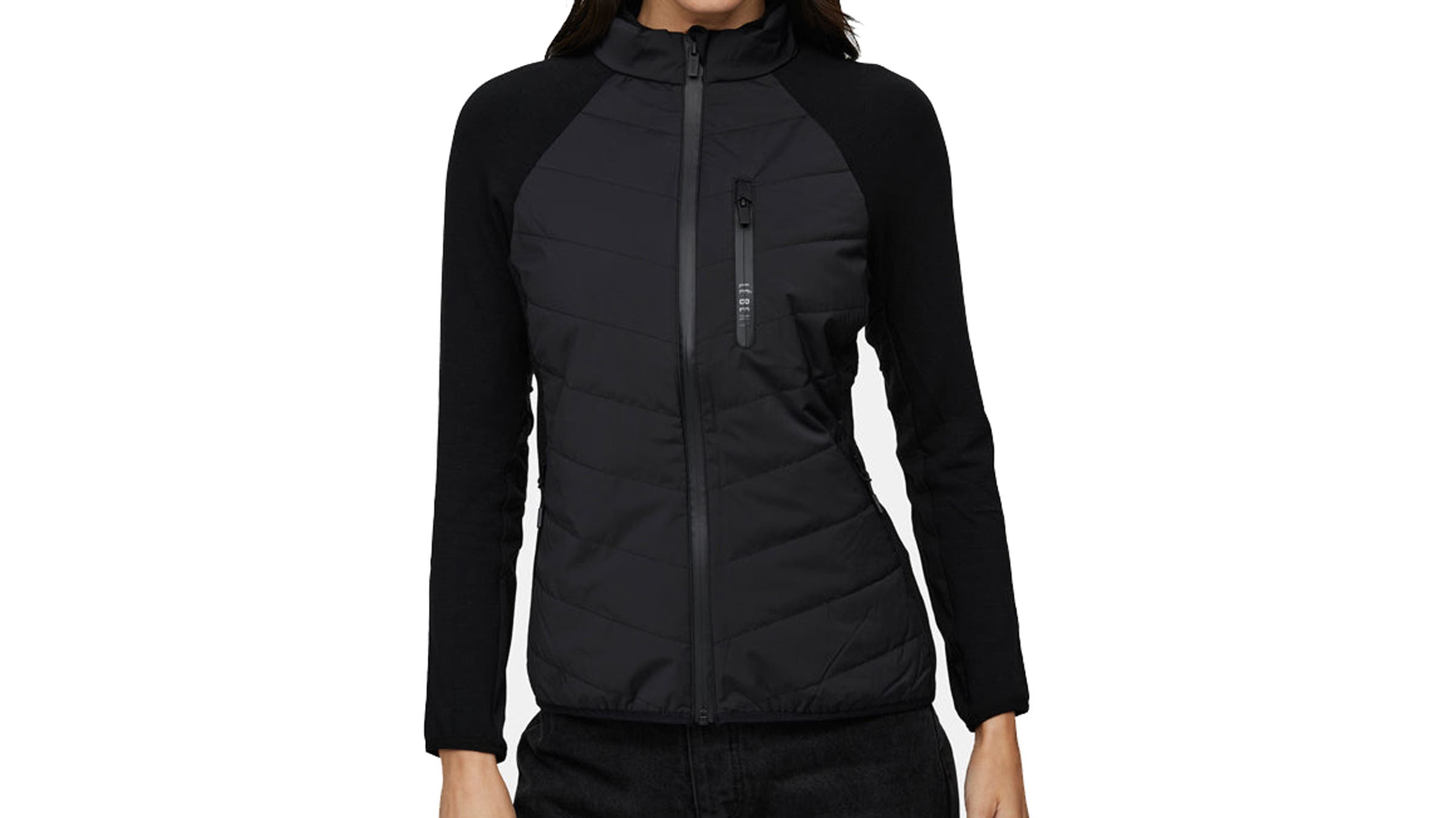
Best Wool
Lé Bent Genepi Wool Insulated Hybrid Jacket
Sizes: XS-L
Weight: 14.8 oz.
Pros and Cons
+ Unconfining fit
+ Odor-resistant
+ Spiffy enough for town
– No extended sizes
– Not compressible
This hybrid wool and insulated baffle midlayer uses a novel construction to achieve impressive freedom of movement despite the close fit: Raglan sleeves extend the underarms’ heat-dumping stretch panels (made of a synthetic/rayon/merino wool blend) around the shoulder blade area to reduce constriction when pole-planting. More of that highly breathable fabric extends across the lower back.

The chest and center back have baffled insulation containing recycled polyester and wool (30 percent), which results in a warmth-sustaining zone that kept us warm down to 8 degrees (during high-exertion Nordic skiing) but comfortable during mild spring days at the resort, when our tester topped it with a shell. Equally versatile is its styling: the sleek cut, oversized zipper, and all-black patterning never looked out of place around town or on road trips.
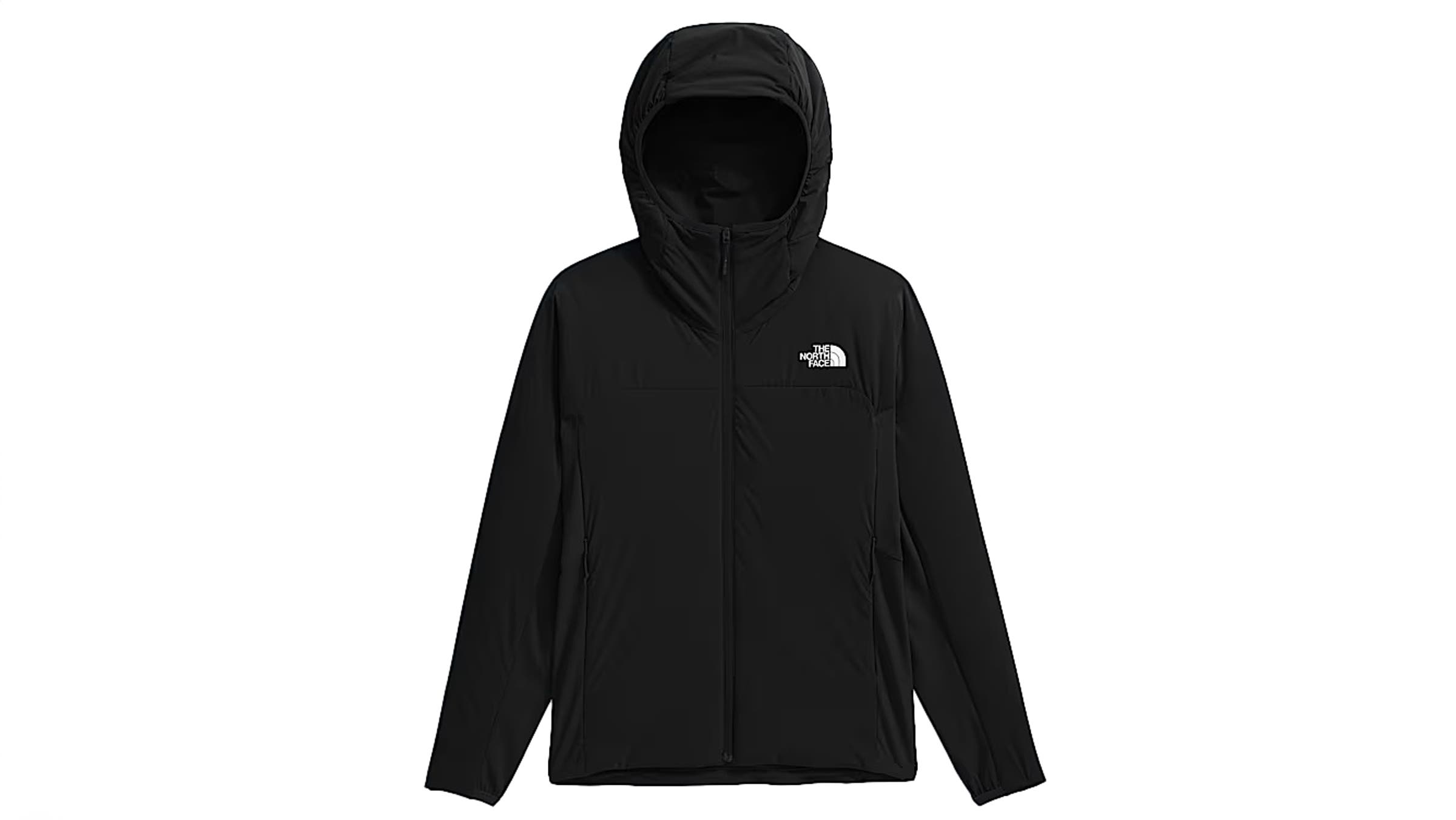
Best Stretch
The North Face Summit Series Casaval Hybrid Hoodie
Sizes: XS-XL
Weight: 14.8 oz.
Pros and Cons
+ Dumps sweat
+ Very compressible
– Tall/long fit not for everyone
Although it looks like a basic midlayer, it dazzles with what you can’t see: The quantity and construction of the interior insulation varies by zone, so that some parts are warmer (the chest uses stretchy, 60-gram synthetic fill) while others excel at ventilation (on the back, elastic sheets of 40-gram insulation are perforated to release moisture). The jacket’s arms get a 60-gram fill, but the hood uses just 40 grams.
“I wore it with both thick and thin layers underneath and never felt overheated,” reports our tester, who took it fat-biking in New Hampshire and hiking in blustery Patagonia (where it held up to 60mph gusts). “It blocked out strong winds effectively while still remaining breathable during high-output activities,” she notes. The high collar also contributes to wind protection, covering much of the lower face when fully zipped, and even the adjustable hood stays snug throughout storms.
TNF won’t disclose exactly what makes their proprietary fabric and insulation combo so stretchy, but we can attest that it provides excellent freedom of movement. The body blends 12 percent elastane with nylon, and the underarm fabric is stretch-woven for extra elasticity. The low-bulk design fits comfortably beneath a shell, and when worn alone, the jacket repels misting rain thanks to a PFC-free DWR. (It also packs down to about the size of a small iPad.) Two extra-large hand pockets hold climbing skins or spare mitts. But the long, narrow cut doesn’t fit everybody, and it’s too insulating for weather warmer than 25 degrees.
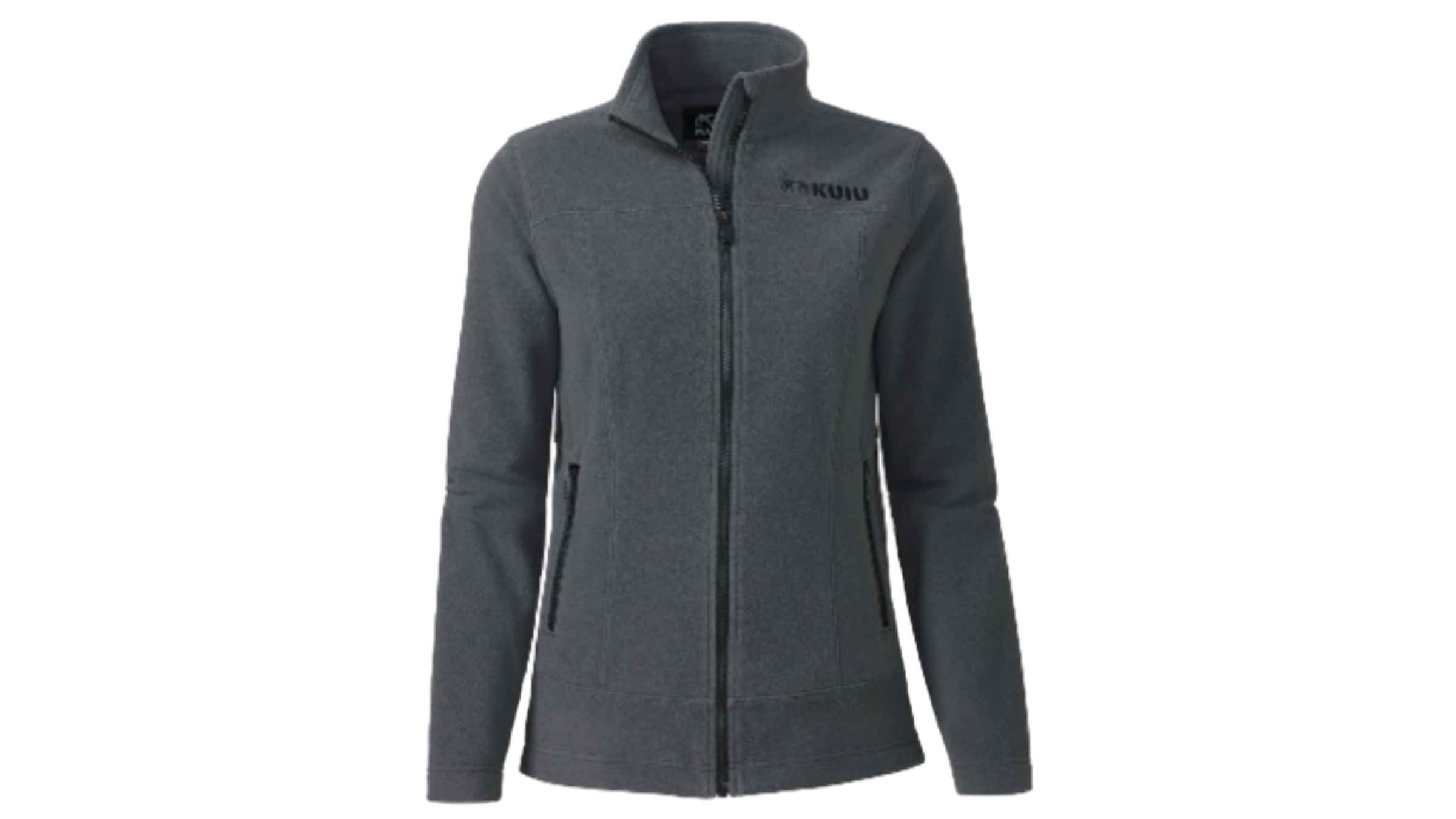
Paid Advertisement by KUIU
KUIU Border Fleece
When you need breathable warmth and reliable layering for alpine versatility, the Border Fleece is your go-to midlayer—or a capable standalone outer. This KUIU fleece is wind-resistant to block winter chill and engineered for maximum breathability, delivering all-day comfort whether you’re on the move or enjoying après. Its streamlined, athletic fit layers easily under insulated outerwear, while the stretch fabric provides full mobility through the shoulders and arms for dynamic movement. With excellent temperature regulation, it functions just as well as a core layer in colder conditions or a warm outer layer in milder weather. Most importantly, its durability and timeless style make it a layer you’ll reach for season after season.
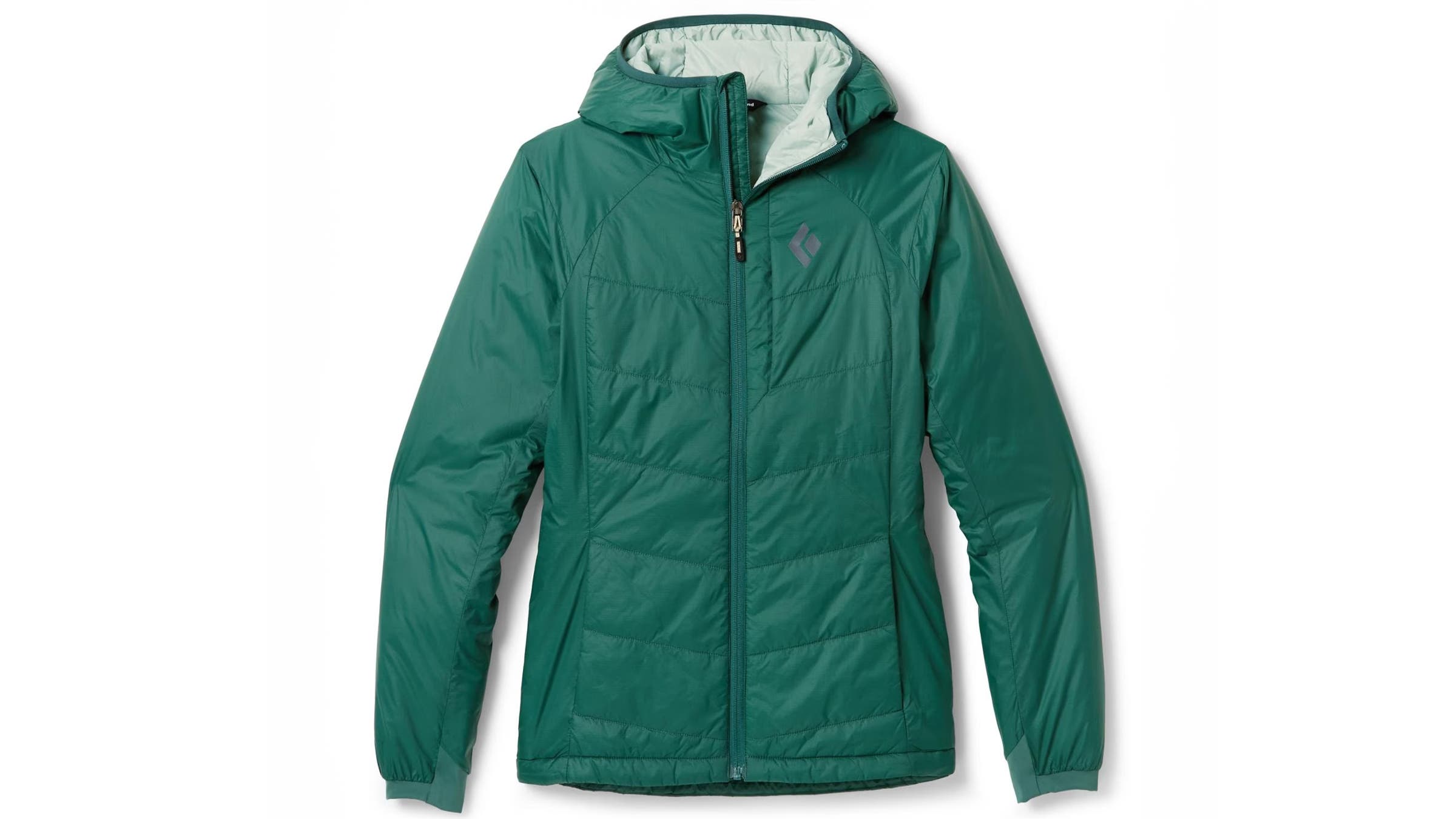
Best Wind Protection
Black Diamond Solution 2.0 Hoody
Sizes: XS-XL
Weight: 11.6 oz.
Pros and Cons
+ Windproof
+ Very compressible
– Breathable for a synthetic-fill jacket
– Limited hood adjustment
Plenty of midlayers are windproof, but few also breathe as well as this synthetic-fill puffy. Credit the premium insulation: 60-gram PrimaLoft Gold Eco costs more than generic synthetic fill but regulated testers’ body temperature through a wide variety of weather conditions and activities. “Hiking uphill or stopped for a break, I never felt clammy unless the temps climbed above 25 degrees,” says our lead tester, who wore it ski-touring, snowshoeing, and resort skiing across Maine. She verified the jacket’s “windproof” claim after uphilling through 40 mph wind at Sugarloaf. (Despite its impressive permeability for such a windproof jacket, it’s still not the most breathable choice for high-output activities.)
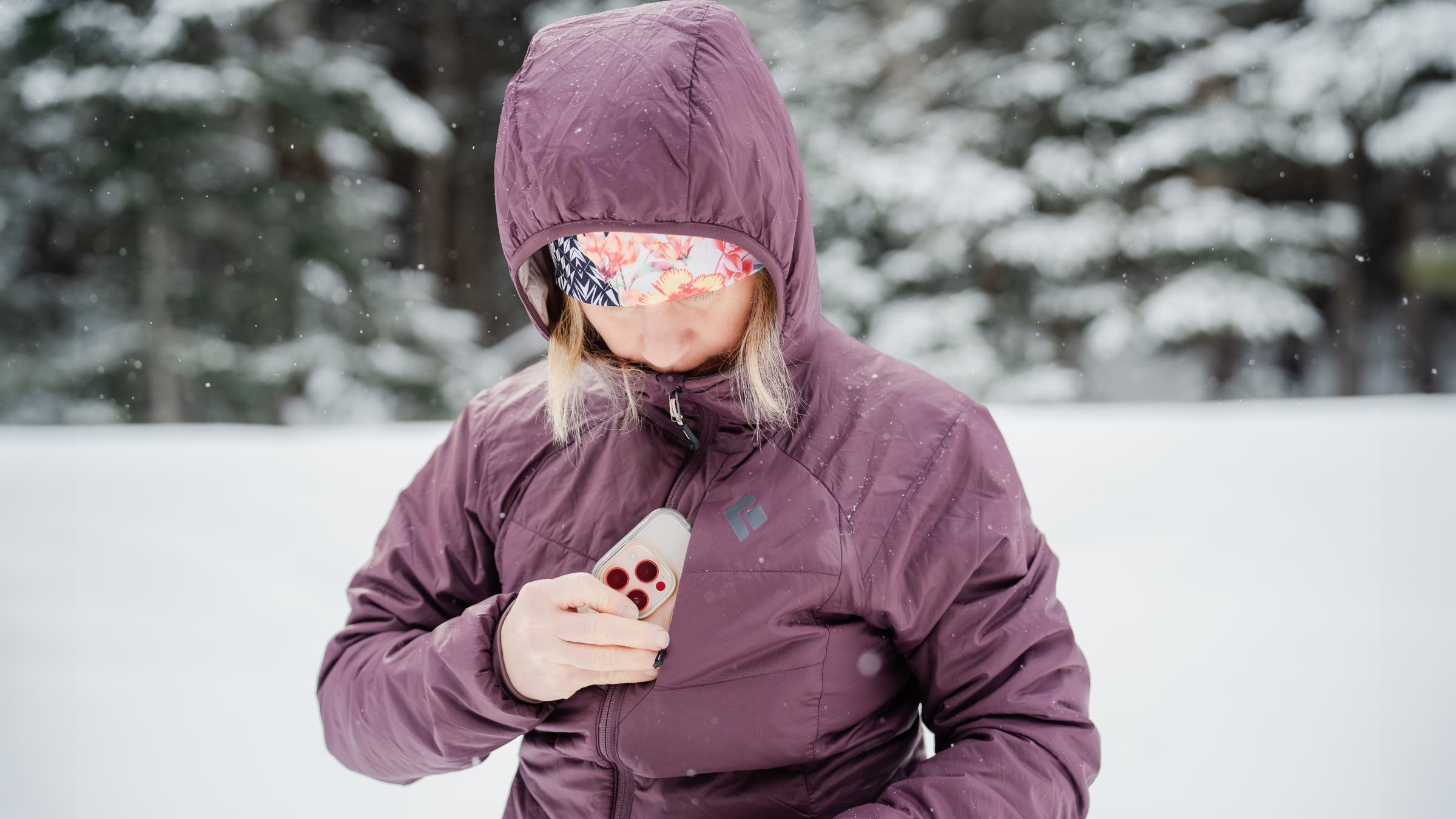
Though the hood lacks adjustability and can’t fit over a ski helmet, its elastic trim effectively snugs it in place when worn over a brimmed hat or beanie. Two zippered hand pockets and one zippered chest pocket secure a smartphone and snacks without interfering with a backpack’s hip belt. The 100 percent nylon shell fabric looks new after a full season’s skirmishes with pack straps and ski edges, and its PFAS-free DWR repels flurries and mist. “Any bulkier and it wouldn’t fit beneath a ski jacket, but it works,” reports our tester, who loves how the stretch-woven cuffs hug the wrists, eliminate excess fabric, and make it easy to layer and pull gloves over.
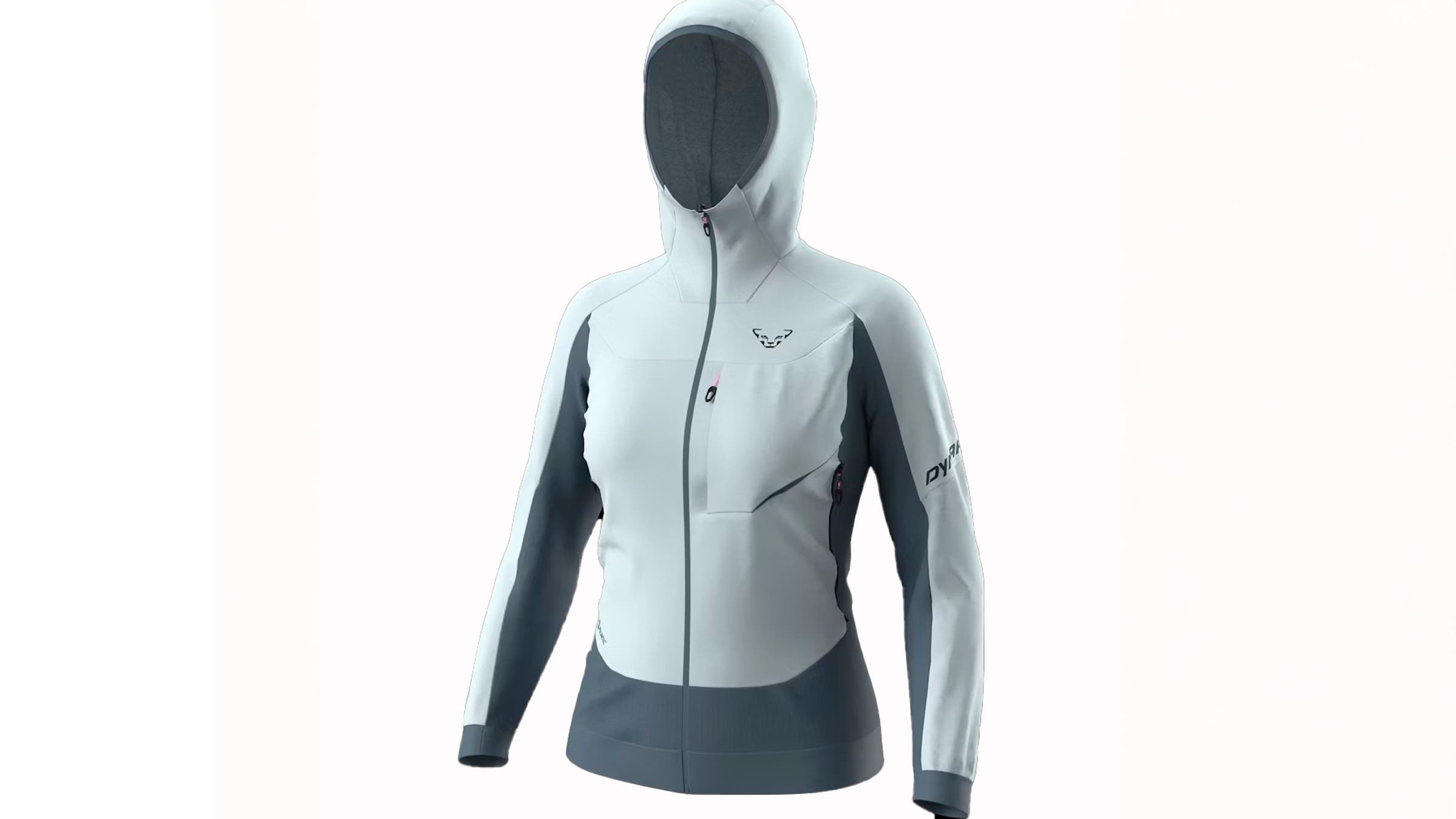
Best Breathability
Dynafit Tigard Alpha Direct Jacket
Sizes: XS-XL
Weight: 12 oz.
Pros and Cons
+ Highly breathable
+ Stretchy
– Chilly during low-output activity
Over the course of a frigid season in Gunnison, Colorado, this shelled fleece became a constant companion for our ski-touring tester, who wore it in 15- to 30-degree temperatures and only topped it with a shell for descents. “The breathability is impressive,” she said, “but it also blocks wind, which I appreciated when skinning up exposed ridgelines.”
That balancing act comes courtesy of a hybrid construction: The jacket uses Polartec Alpha Direct—one of the lightest, most breathable synthetics in the industry—and wraps it in an ultralight stretchy, PFC-free DWR-coated nylon. The coating shed light precipitation—a feature we were grateful for while hiking up Aspen’s Highland Bowl during flurries.
The sides and underarms feature a gridded, woven fleece that’s also heat-dumping and stretchy. “I love the freedom of movement,” gushed our tester. Three zippered pockets (one chest, two hand) fit a smartphone and snacks, and the head-hugging hood seals in warmth and blocks wind better than most toques.
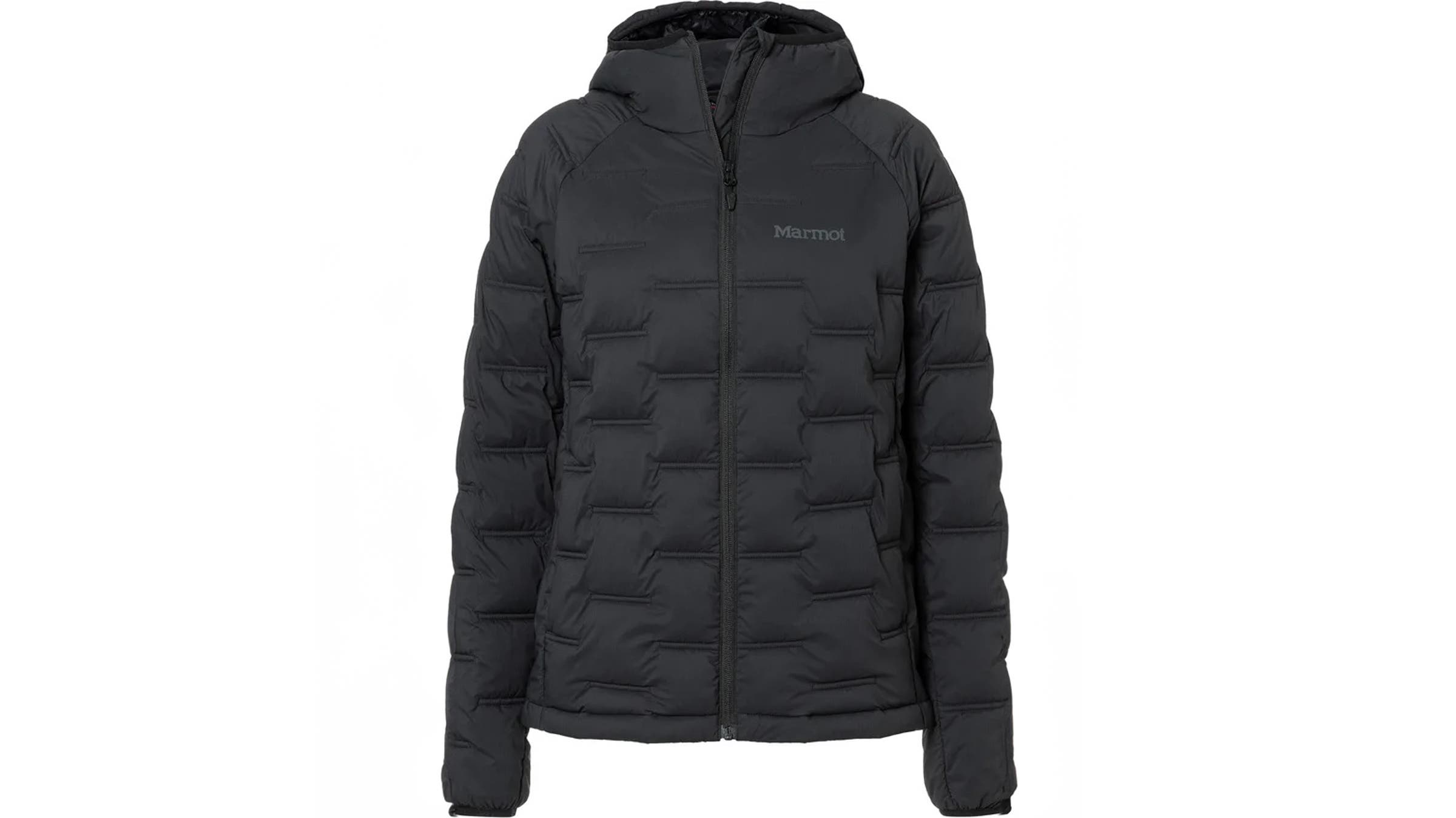
Best for Cold Conditions
Marmot WarmCube Active Novus Hoody
Sizes: XS-XL
Weight: 16 oz.
Pros and Cons
+ Highly insulating
+ Doesn’t feel bulky
– Not weather resistant
This jacket’s triumph is the way it pairs heavyweight insulation—testers wore it in -10 to 15-degree temperatures—with outstanding breathability and mobility.
That’s achieved by surrounding plump squares of “featherless” synthetic insulation (its polyester flakes imitate the soft, body-conforming feel of down) with uninsulated strips that promote mobility and ventilation. “It let me move around a lot in cold weather without overheating,” reports our New Hampshire tester after wearing it while backcountry skiing near Zealand Falls Hut and hiking around Franconia Notch. “The gaps in the baffling allow for so much airflow, yet that maximized airflow somehow doesn’t compromise heat retention,” she explains.
Those air channels are just as good at letting wind in, however, so our tester topped this jacket with a shell whenever conditions grew gusty or wet (the 100-percent preconsumer recycled nylon ripstop doesn’t offer much protection beyond drizzle.)
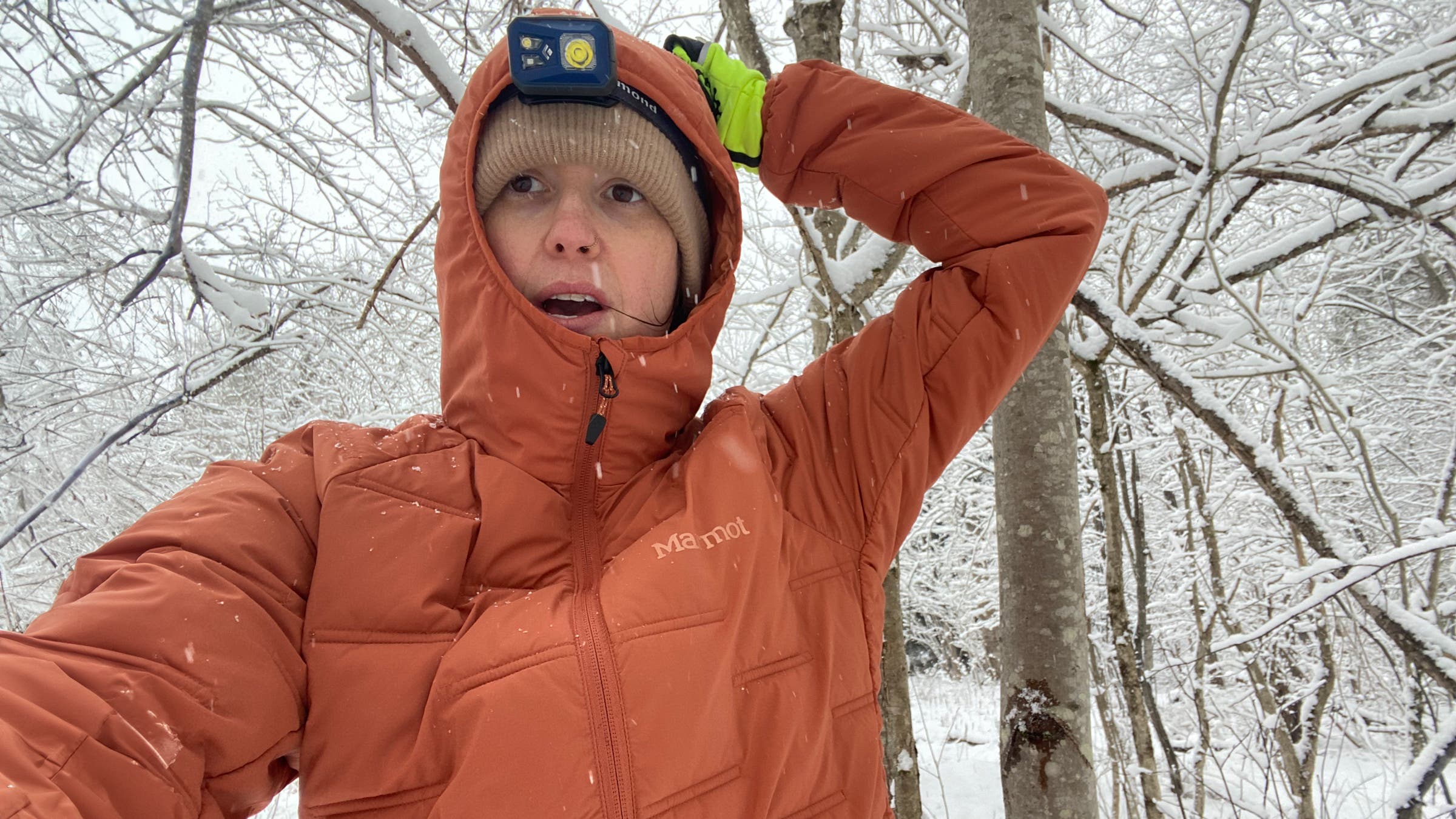
“This jacket is surprisingly sleek for a puffy, so it doesn’t feel bulky when I wear it under a shell,” says our tester. The elasticized hood hugs the face and creates a tall, neck-cozying collar that reaches to the chin. Two zippered hand pockets and two internal drop pouches secure handwarmers or a phone. Testers found the fit to be universally roomy—some shoppers may want to size down.
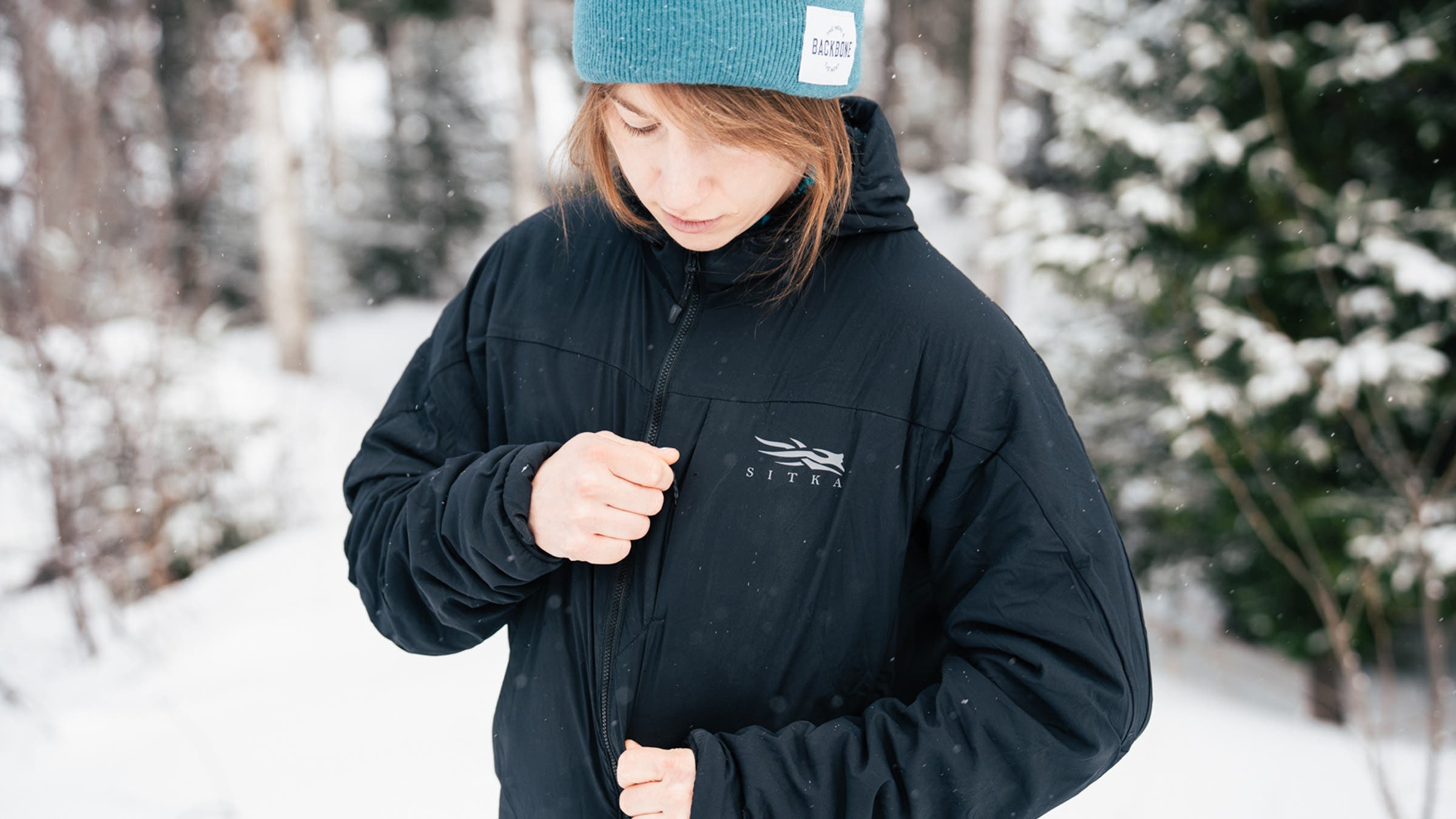
How To Choose an Insulated Breathable Midlayer
Midlayers are all about finding the sweet spot for your activity and weather conditions. Unlike heavy down hoodies and parkas meant for sitting around camp or belaying ice climbers, midlayers need to keep you warm while also offering breathability.
The warmth-to-breathability ratio is key: In general, a great midlayer should keep you warm, but not so warm that you overheat and soak it with sweat. Protection from wind and precipitation is a bonus, but midlayers are often paired with a waterproof shell in bad weather, so finding that magic warmth-breathability balance should be your priority.
Synthetic fabric and insulation are key to almost all midlayers. Fleece-backed jackets, with their porous fibers, offer the best breathability, but can often be too thin and permeable for very cold or windy conditions. Hybrid or “body-mapped” designs that blend baffled panels with other fabrics are excellent for working up a sweat colder conditions. And finally, minimally-vented synthetic insulated jackets provide the most warmth at the cost of breathability, although they are still a better choice than sweating it out in a down puffy.
Here’s how to decide which midlayer is right for you:
How Hard Are You Going to Hammer?
If you are planning to work up a lather, look for breathable layers that will keep you from getting clammy, which can turn hypothermic if you stop moving or encounter big winds. Fleece-backed jackets, like the Dynafit Tigard Alpha Direct Jacket (which uses loosely- woven Polartec Alpha Direct), are king when it comes to breathability. If conditions are too windy or frigid, however, ramping up to a midlayer with some synthetic fill, like the Flylow Mia Jacket, is a better choice.
How Wet Will It Get?
Down-filled layers have the best warmth-to-weight ratio when it comes to outdoor gear, but quickly lose that advantage if you’re sweating from the inside or getting soaked from the outside. Synthetic fill (used in most midlayers reviewed here) and fleece-backed jackets keeps you warm when wet. So does wool (the Lé Bent Genepi) though it does absorb water over time and becomes a soggier, heavier insulator.
How Cold Will It Be?
If you know it’s going to be frigid or you’ll be moving slow, by all means, go for a thicker puffy like the Marmot WarmCube Active Novus. But if you’re moving fast, chances are a piece with that much insulation will be overkill. It’s not a bad idea to pack two midlayers, or at least including a fleece in your kit, to account for changing temperatures and exertion levels.
How Much Weather Protection Do You Need?
If you plan to wear a wind-and waterproof shell over your midlayer, you won’t need to worry about the storm cutting right down to your base layers. If not, look for a piece that offers some wind and water resistance, like the Black Diamond Solution 2.0.
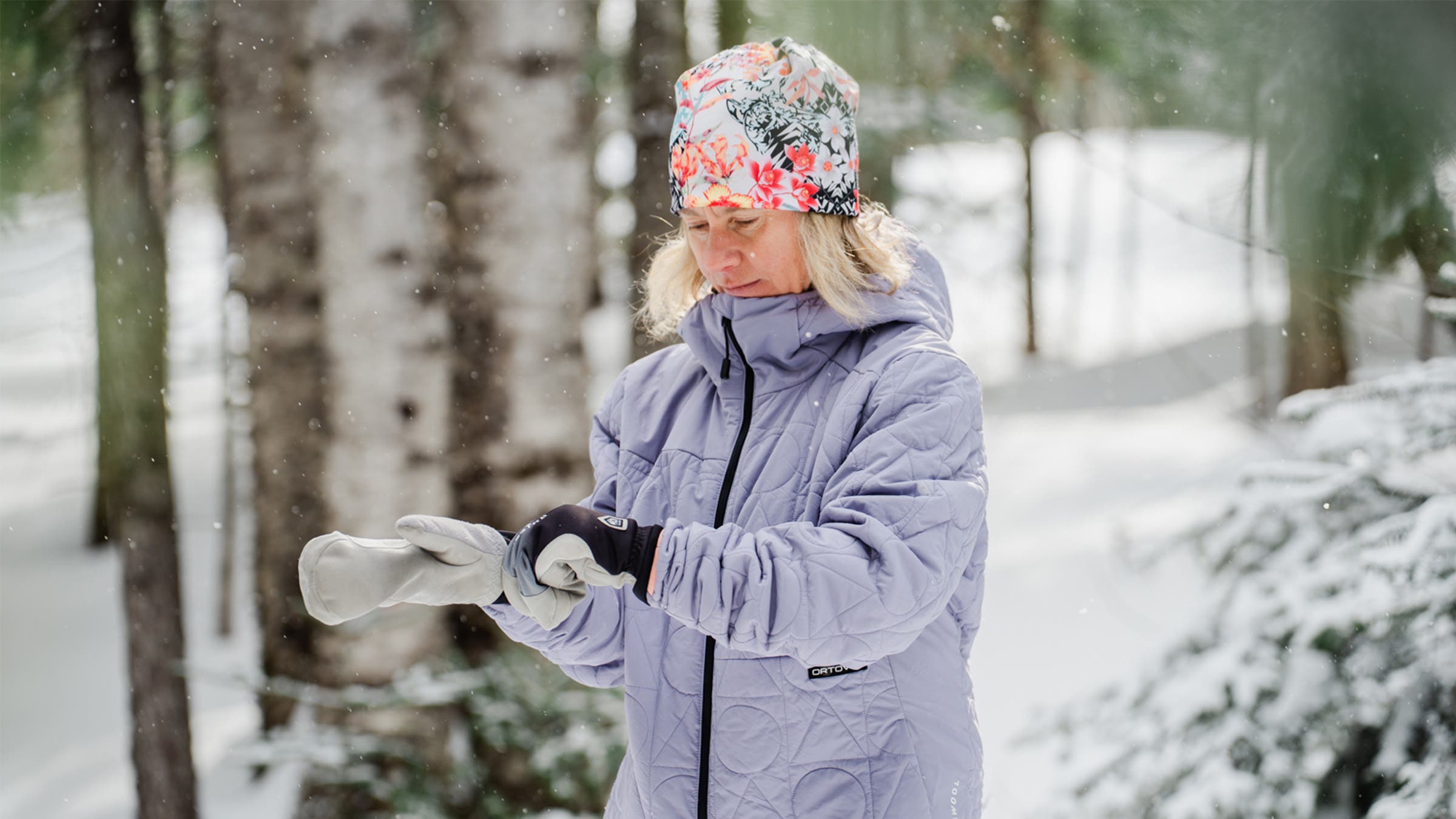
How We Test
- Number of testers: 10
- Number of products tested: 46
- Coldest temperature: -11F
- Strongest wind: 45mph
- Most daily vertical: 3,200 feet
- States represented: 5 (California, Colorado, Wyoming, Minnesota, Maine)
Our testers are obsessive skiers, mountaineers, ultrarunners, climbers, hikers, and view-admirers. We recruit enthusiasts from across the country so that they can report on gear performance in varying climes: Through lake-effect snow in Minnesota, high-altitude sun and wind in Colorado, and mixed snow and rain in Maine. We invite a spectrum of body types to report on fit. And we push testers to find the limits of each item they wear so we can identify its best use-case scenario.
For this test, we evaluated 59 midlayers. We asked testers to consider the fit, breathability, warmth, and best application of each midlayer: Is the jacket best for ski-race spectation? Nordic skiing? Après at the resort? All of the above? Only the items that earned raves reviews in every metric earned a spot on this list.
Meet Our Tester
Kelly Bastone moved to the Colorado Rockies in 1998 and has pursued outdoor sports ever since. A freelancer who writes about gear and other outdoor topics for publications such as Backpacker, AFAR, and The Red Bulletin, Bastone has contributed many gear reviews to Outside over the years. An avid skier (resort, Nordic, and backcountry), fly-fisher, mountain biker, and mushroom forager, she gets the news she needs from the weather report.